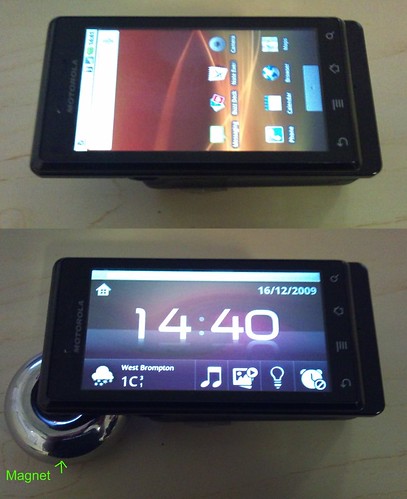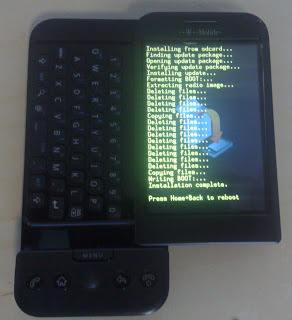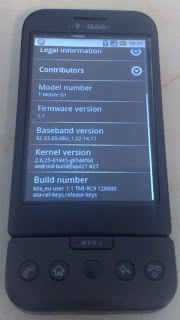
I absolutely love developing for the Android platform, I've never felt this way about any other platform. But what if that just isn't enough; In a market where the 'Top 100 Most Popular Games' doesn't contain a single paid game, is there money to be made? Is the userbase sufficient and willing enough to support a developer? is the Market growing fast enough to contribute to ongoing revenues? Here are my frank and open findings based on 3 applications I've made available in the Market over the past 6 weeks:
Case 1 - Shoot the Ducks
Shoot the Ducks is a simple game that's quick to play and looks pretty good. First round is based on the classic 'Duck Hunt', then second round is target practise and then skeet shooting, etc... It took 12-24 hours to developer and I launched it into the Market at a discounted rate for the first 100 installs of £0.50, increasing to £0.79 after that.
Revenues after all feesDay 1 - £32.94
Day 2 - £36.70
Day 3 - £28.65
Day 4 - £15.60
Day 5 - £6.05
...
Day 9 - £3.30
Day10 - £6.80
Total so far £144.99
Lesson 1As expected there is an intial peak while the game is in the top 10 Most Recent games. What wasn't expected was an ongoing revenue stream of around £5.00 per day after the app had dropped down the charts. Slow and steady with Low-volume Low-cost. If this revenue keeps up as new Android devices are launched, takeup increases and paid Markets open in other countries, there is hope yet.
An optimistic model would show a developer with 10 games in the Market averaging £5 per day per app. Multiplying that up you have £50 per day, £1500 per month, £18250 per year. I appreciate that isn't up to the standards of some of the iPhone Appstore stories, but it is better than a kick in the nuts for a months work. Of course it still remains to be seen whether 'Shoot the Ducks' is still generating revenue outside of its first month.
Case 2 - Ultimate Stopwatch & Timer
This didn't take too long to build approx 8-12 hrs, but it was designed to be and is regarded as the best Stopwatch / Timer in the Market. I orginally launched it for £0.50. After 2 weeks there had been 12 installs and 8 uninstalls, uninstalling an Android Market application in the first 24 hours results in a full refund. So total revenue after fees was about £1.50.
Not entirly happy with this outcome I decided I may as well make the application free and see what happens. Well what happened next suprised me, the application had 1000+ installs a day for the next few days and is currently at 13031 installs of which 10623 are still installed.
Lesson 2There were other, very plain stopwatchs in the Market. If there is an app in the store which provides similar functionality to yours for lower cost, then the current G1 userbase won't pay for a nicer UI. However there is a strong demand for free high quality applications, unsuprisingly. Also highlighted by the 37027 installs of another of my free apps, Newton's Cradle.
Case 3 - Latitude Enabler for Root
There is a long and drawn out story behind this application. Check some of
my previous Latitiude posts for details. But to nutshell it, T-Mobile UK barred Google Latitude on the T-Mobile G1 in the UK. I discovered a way to reenable it, but the fix only worked if you had "rooted" your G1 (the G1 equivalent to jailbreaking an iPhone, and hilarious to anyone from Austrailia)
Lesson 3It turns out that G1 owners are a bunch of hackers. There are a lot of 'rooted' G1 phones out there and these guys are more likely to be techies and will pay for useful apps like Wifi Sharing, tethering, VPNs, etc...
In conclusion...The Android Market is turning around. Paid games are climbing up the charts and I reckon we'll see a paid game break into the top 100 Most Popular Games within the next month. G1 users were slightly spoiled by apps being releassed for free, as payments weren't available in the Market from launch. But users are quickly getting used to the fact that premium content comes at a premium price and are prepared to pay. Developers are settling on relatively low price points, although similar to those found on the iPhone, to try and drive their apps up the Most Popular listings, as that is where the holy grail of seeing 250,000+ installs resides. Top paid games are currently struggling to get 5,000 installs. I'm holding out a lot of hope for some key improvements being made to the Market over the coming months, not least of all a proper website for browsing the apps.
Until then I'll try to exploit the potential of the slow and steady low-volume low-cost model by creating and launching some more quality Android games.


















 The first incarnation wasn't quite so pretty, but I've got it looking quite nice now. A little 24bit alpha blended glow around the widget helps it blend into any wallpaper. There is also a little charging indicator for the sake of completeness.
The first incarnation wasn't quite so pretty, but I've got it looking quite nice now. A little 24bit alpha blended glow around the widget helps it blend into any wallpaper. There is also a little charging indicator for the sake of completeness. If you touch the widget it shows quick links to the Display, Wifi and GPS settings pages. Really this should be replaced with embedded toggles switches to turn GPS/Wifi/Bluetooth/Radio on and off as well as a brightness slider, hopefully I'll get time for that later.
If you touch the widget it shows quick links to the Display, Wifi and GPS settings pages. Really this should be replaced with embedded toggles switches to turn GPS/Wifi/Bluetooth/Radio on and off as well as a brightness slider, hopefully I'll get time for that later.











